|
15
MAR
2015
|
|
|
|
Chinchillas are popular small pets in South Africa, but by virtue of being housed and caged in our homes vets will often see some recurring problems in their clinics.
Some of the more common issues vets will see include;
Dental disease
Chinchilla’s have continuously growing teeth. They need to grind both the incisors and cheek teeth by eating high fibre diets. They may often be presented with swellings around the face and mouth, drooling saliva, anorexia and weight loss. If you see any of these problems, check the dental anatomy, looking for spurs, bleeding cheeks/gums and swellings along the mandibular jaw line. Vets will use lateral, oblique and dorso-ventral x-rays to look for abnormal changes. A great resource for comparing normal and abnormal dental anatomy for vets is ‘Clinical Radiology of Exotic Companion Mammals’.
Gastrointestinal disease
As with all fibrevores, digestive diseases are particularly common, with constipation, dia.. [More]
|

|
|
|
Tags :
Common Chinchilla Ailments In South Africa
|
|
|
|
15
MAR
2015
|
|
|
|
Rabbit owners are delightful people. You know that they are rarely loud and obnoxious (their rabbits would never stand for it); they have plenty of patience (because getting to know a rabbit takes time); and you can be certain that they are full of love and laughter (because that is exactly what rabbits inspire).
So, if you have gotten yourself a pet rabbit, welcome to the club. Your new baby bunny is sure to hop his way into your heart (or thump, depending on how stubborn you are about it). Rabbits are truly easy to love, as long as you give them just a few basics. Bunnies of all ages can be skittish, so avoid loud noises when you can. They also love to keep their feet on the ground, so be prepared to build ramps up to the couch. And, above all, rabbits have a specific diet, which undoubtedly should not be altered as it will affect the health and happiness of your pet.
Feeding Your Rabbit Timothy Hay
Rabbits (and other small furries, including chinchillas and guine.. [More]
|

|
|
|
Tags :
Why Is Timothy Hay Important For Rabbits In South Africa , Timothy Hay in South Africa , Rabbit Food South Africa
|
|
|
|
11
MAR
2015
|
|
|
|
How Often Do You Need to Clean Your Hamster’s Home?
Most pets, just like most people, need their homes cleaned about once a week. But that doesn’t mean you can ignore your hamster’s home the other six days of the week.
You should take a moment to spot clean the bathroom and do the dishes every day. When you feed your pets, remove the food bowl from you hamster’s home and empty it of leftovers. This is especially important if you’ve given them any fresh treats. Wipe the bowl with a tissue or paper towel before refilling it. And, while you’re there, you may want to scoop out visible debris in the bathroom area. Don’t forget to refresh the shavings here if you take some out.
What Goes into a Weekly Clean?
The most important part of cleaning your pet’s home is making sure your hamster (or hamsters, as they prefer) is secured. Exercise balls are a great way to do this, but as long as your hamster can’t escape.. [More]
|
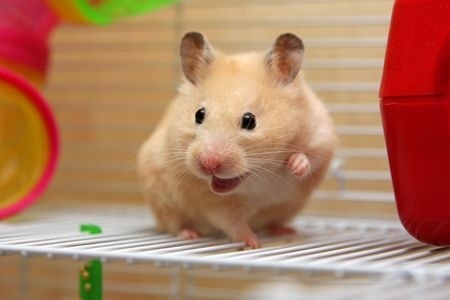
|
|
|
Tags :
Cleaning Your Hamster’s Cage in South Africa , Cleaning Hamster Cage South Africa
|
|
|
|
11
MAR
2015
|
|
|
|
How Often Should You Clean Your Rabbits’ Home?
As with many pets that live in an enclosed area, your rabbits need a visit from housekeeping about once a week. This includes a thorough clean using a pet-safe sanitiser. Typically, you will need to restrict your pets’ movements in one area or another during this time so you can get to every nook and cranny during your cleaning process.
However, you can’t neglect daily chores. Your rabbits need a basic tidy every day. This includes cleaning out any soiled shavings or bedding (as these can lead to the spread of disease). You must also clear out any uneaten food during this time. Cleaning water and food bowls is important on a daily basis and should be done before refilling them.
What Else Do You Need to Know?
When cleaning your rabbits’ living areas, always check for signs of damp or standing water. These conditions make it easy for fleas, ticks and mosquitoes to breed. While these insect.. [More]
|
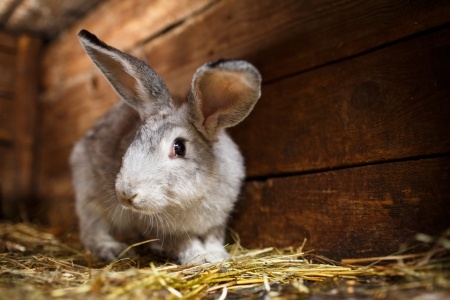
|
|
|
Tags :
Cleaning Your Rabbits’ Living Areas in South Africa , Cleaning Rabbit Cage South Africa
|
|
|
|
21
FEB
2015
|
|
|
|
Gone are the days when you could pick up a simple cage for your gerbils and call it home. Indeed, those homes were never fit for your pets. Your pets deserve a gerbilarium, which is a lot closer to penthouse living than a simple cage could ever be.
A gerbilarium consists of a wire cage-like structure on top of a plastic tub filled with wood shavings. So, it may look ordinary until you factor in the different internal levels and areas in this home. Gerbils love to dig, so the lower layer can (and should) be quite deep, and filled with shavings. On top of that, a couple of different levels, joined with fun climbing ramps and ladders and some snuggly areas to hang out make a gerbilarium home. Finally, gerbils are super fast. Make sure you can secure your pets’ home, or they’ll make a dash to discover what else you’ve got hiding in your house.
What Else Makes a Gerbilarium Home?
Having a gerbilarium is just the first step to health and happiness. N.. [More]
|

|
|
|
Tags :
Gerbils Love to Live It up in Style , Gerbil Home South Africa , Hamster Cage South Africa , Pet Rat Cage South Africa , Gerbil Cage South Africa
|
|
|
|
25
JAN
2015
|
|
|
|
Choosing the correct filtration system for your aquarium is an important decision that will impact not only the type and quantity of livestock that you wish to keep, but also the amount of maintenance that the system will require. The filtration system is responsible for keeping the water clear and free of particulate matter (tiny fragments of plant material, leftover food, feces, waste products from the fish, etc.) and toxic compounds that are dangerous to the inhabitants. The strengths and weaknesses of the commonly available types of filtration will be discussed in this article, so you can make the right decision in choosing the filtration for your aquarium.
The three categories of filtration
There are three types of filtration that are necessary for the health of any aquarium:
Mechanical
Chemical
Biological
Before choosing a filtration system, it is important to understand all three, and how they will benefit yo.. [More]
|
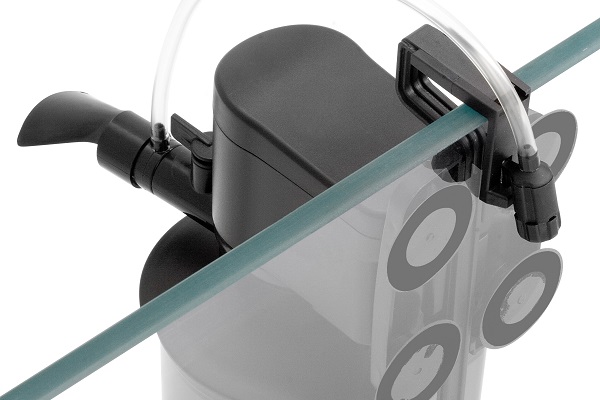
|
|
|
Tags :
Choosing The Right Aquarium Filter in South Africa , Canister Filter South Africa , Power Filter South Africa , Filter Media South Africa , Fish Tank Filter South Africa
|
|
|
|
19
JAN
2015
|
|
|
|
Poly-Filter is used for filtering and purifying both fresh and salt water aquariums. It is a formulation of a special patented material bonded to a synthetic matrix. By means of a unique proprietary process, the Poly-Filter is made impervious to salt and is also organic loving to certain materials. It can absorb and adsorb contaminants and other toxic materials found in nature or added to fresh and salt water with or without fish and invertebrates. Medication added to fresh and salt water aquariums for treatment of diseased fish will automatically be removed by the Poly-Filter after serving their intended purpose before the medication can produce a toxic effect on the fish.
Poly-Filter is non-toxic and harmless to biological filtration because it allows a sufficient amount of ammonia to reach the biological filter in order to sustain the bacteria culture. Poly-Filter provides a supplemental means for removal of ammonia when the biological filter is unable to break dow.. [More]
|

|
|
|
Tags :
Poly-Filter For Crystal Clear Aquarium Water Quality in South Africa
|
|
|
|
17
JAN
2015
|
|
|
|
There are a number of different plants that are poisonous to rabbits. And, while it is obvious that certain plants should not be kept in the same habitat as your pet rabbits, there are many more plants that you’ve probably never considered. Harmful plants can include certain types of fruit bearing trees, ivies and a host of beautiful flowering plants.
We’ve included here a short list of plants that are poisonous when consumed by rabbits. This list includes plants that are most commonly kept in homes, but there are many more.
For a complete list of poisonous plants, you can refer to the Rabbit Awareness Week Website. Remember, just because you don’t see a plant listed here, it does not mean it’s safe for your pet to consume.
33 Poisonous Plants To Avoid
This list is not exhaustive, but here are some common plants to avoid…
Aloe, Apple seeds, Apricot plants (except the fruit), Avocado leaves, Azalea leaves, Begonia, Cale.. [More]
|
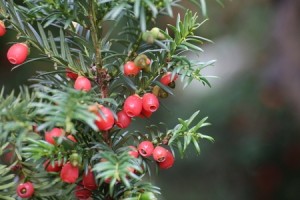
|
|
|
Tags :
Poisonous Plants And Your Rabbits In South Africa
|
|
|
|
15
JAN
2015
|
|
|
|
LED (Light Emitting Diodes) lighting is fast becoming the preferred choice for aquarists, as it uses less electricity than standard forms, lasts much longer and produces up to 80% more light than traditional fluorescent tubes. It produces a deeper, purer light to support healthy plant growth, enhance natural colours and illuminate stunning marine life.
The light seems to penetrate the deepest corners of the tank, showing off every aspect of the life within. Traditional fluorescent lighting, whilst a long standing favourite, has some disadvantages. It emits heat, which can be transferred to the water, doesn’t have a long shelf life, and can easily be damaged both in transit and once it’s in situ in the aquarium.
LED lighting can be adjusted and dimmed to adapt to your own personal lighting schedule, and as it’s a compact, light, product it’s easier to transport, fit and maintain. LED lighting also has the added bonus of creating a very realistic s.. [More]
|
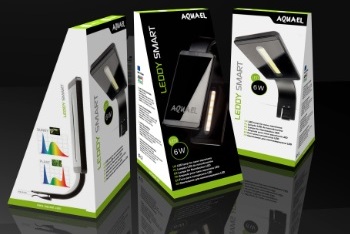
|
|
|
Tags :
Benefits of LED Lighting in South Africa
|
|
|
|
22
OCT
2014
|
|
|
|
Chinchillas are friendly animals that are well-known for their timid nature and soft, luxurious fur. They can make a great pet for older children and adults – but how many of these facts did you know about them?
1. The word chinchilla literally translates to ‘little Chincha’. The beloved pet was originally named after the Chincha people who once lived in the Andes Mountains in Peru.
2. Chinchillas are native creatures to South America, in particular within northern Chile and Peru. The rodents are extremely sociable and often live in groups of the hundreds in the Andes mountain range. On average they live on high grounds, often settling at 15,000 feet in the mountains. Although they are now usually a silver colour, in the wild Chinchillas are originally thought to have been a yellow-grey colour.
3. Their famous fur is so thick as a result of adapting to their mountainous habitat. Chinchilla fur is very dense to deal with cold temperatures. A Chinc.. [More]
|
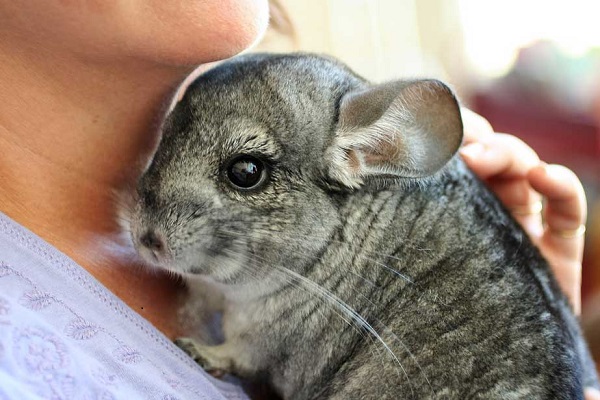
|
|
|
Tags :
How much do you know about Chinchillas in South Africa?
|
|
|
|
|
|
Category List
|
|
|
|
|
|
Archive List
|
2025 2023 2022 2021 2020 2019 2018 2017 2016 2015 2014 |
|
|